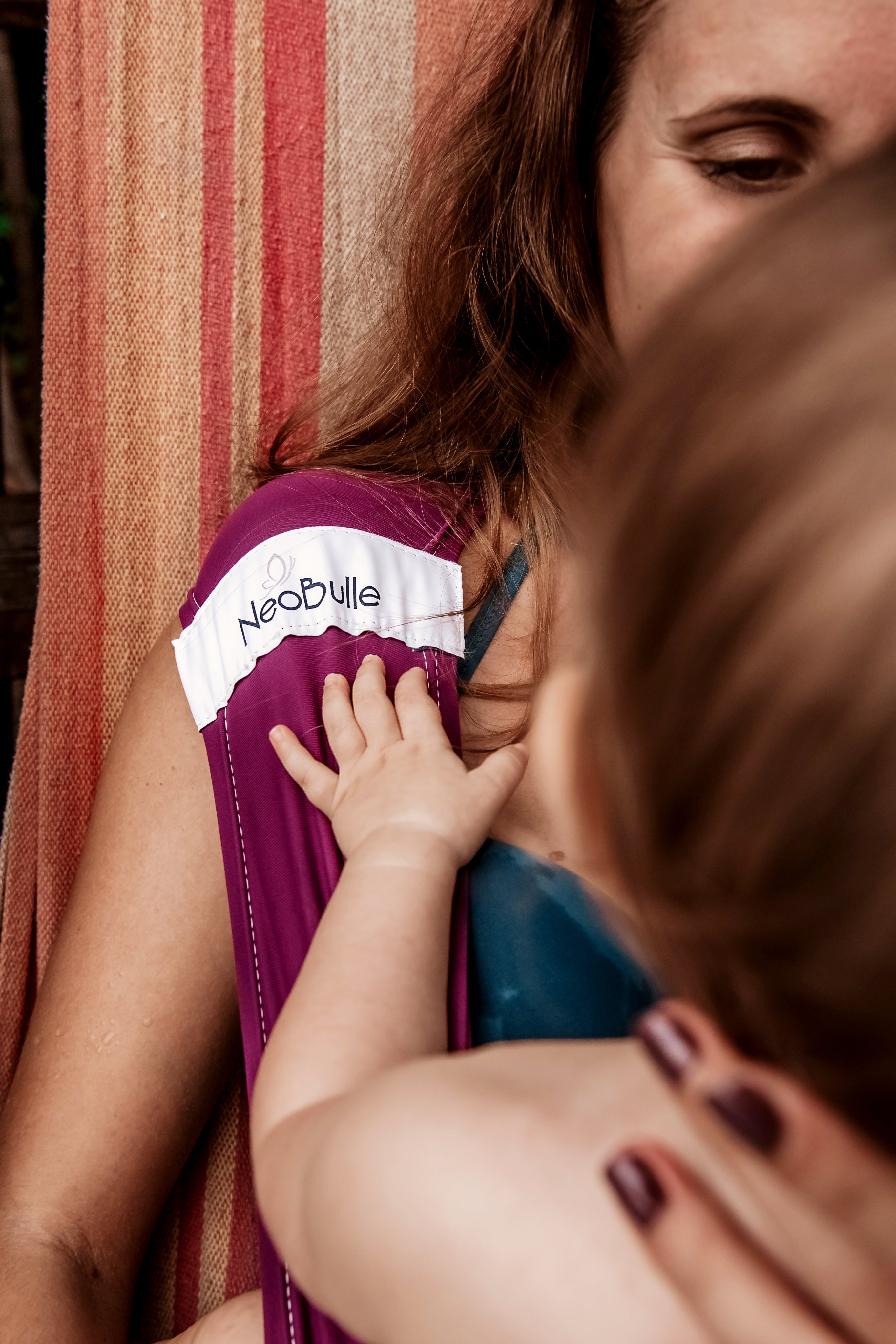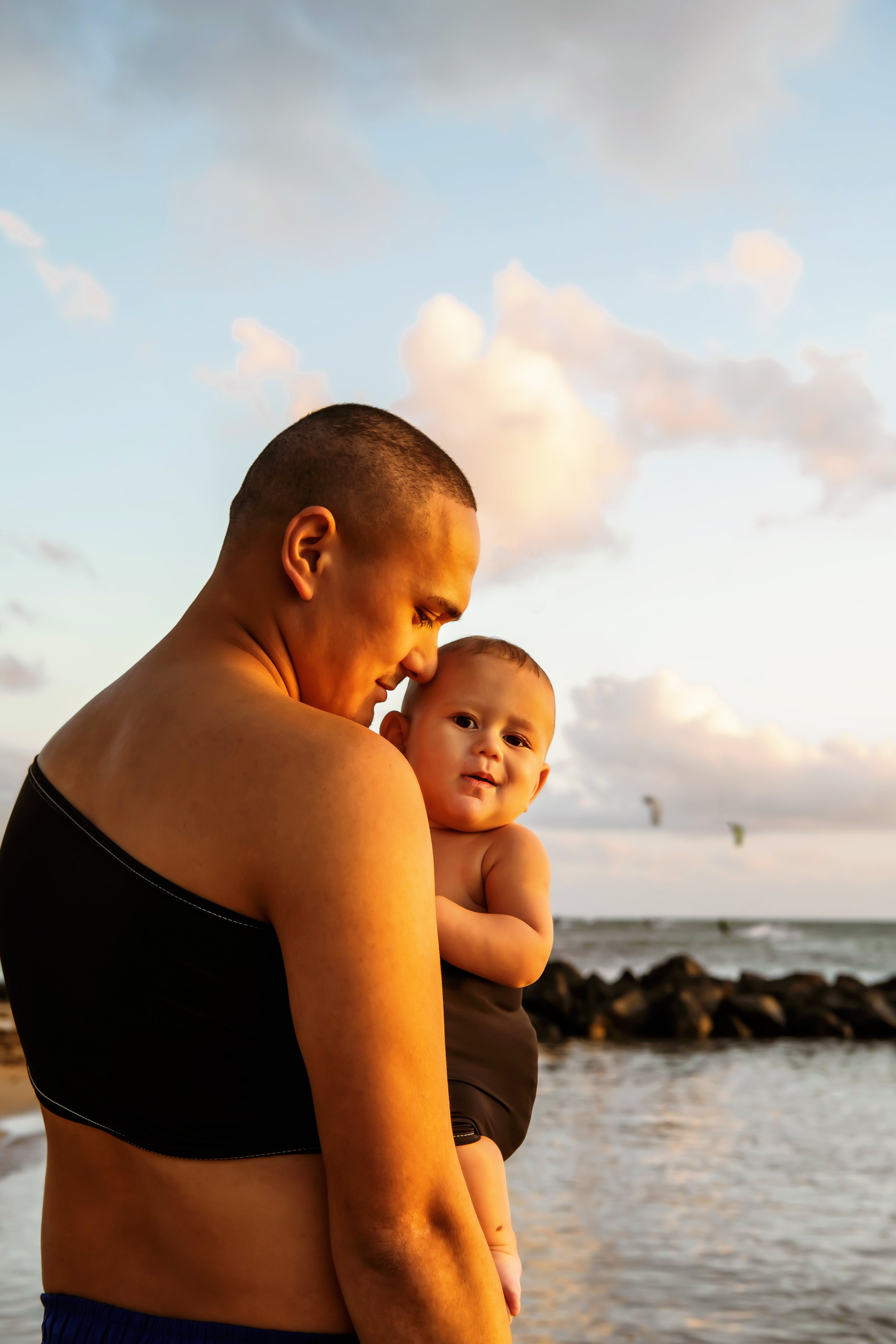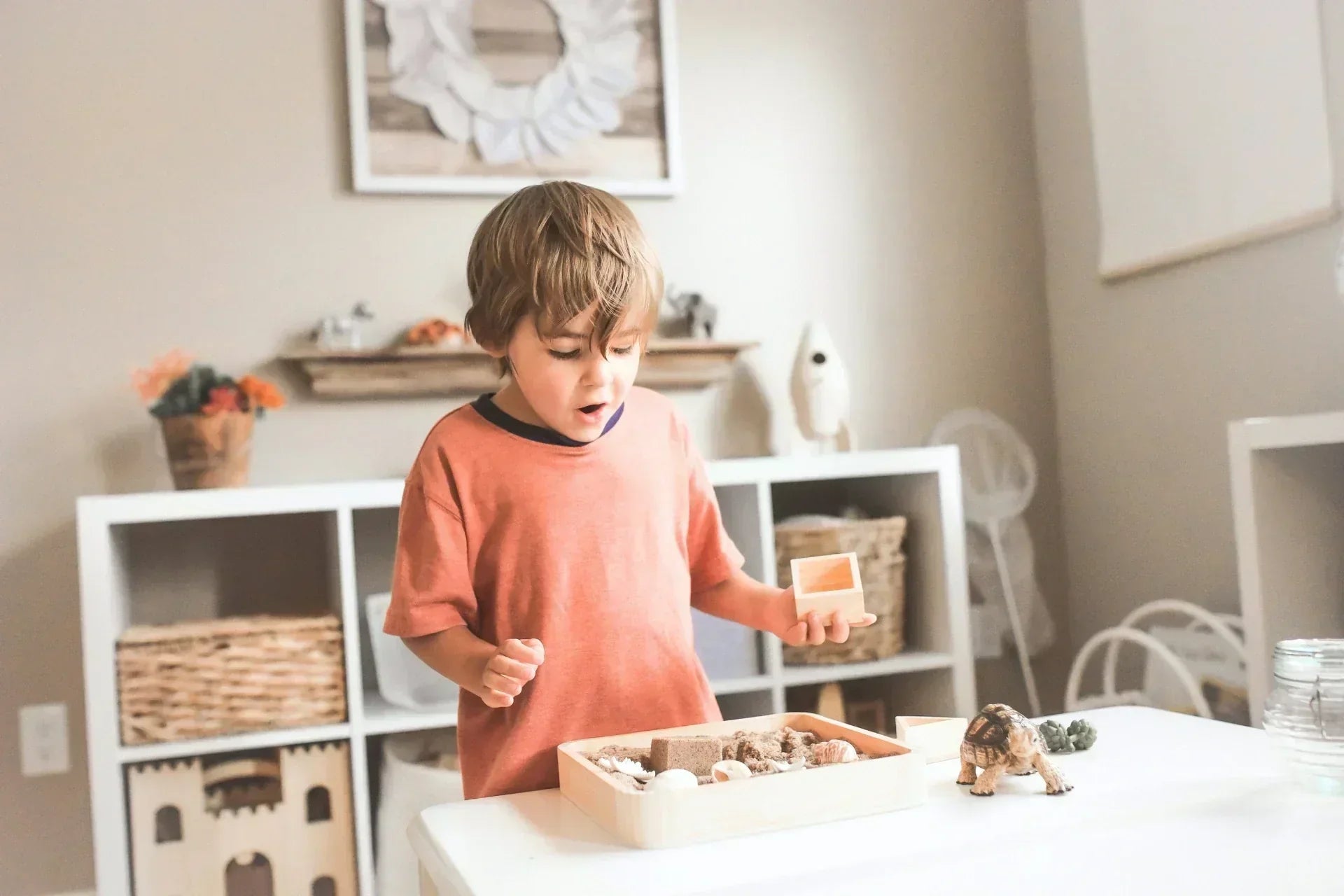When you become a parent, carrying your baby quickly appears as a practical and gentle solution to keep your baby close to you and soothe them. Indeed, it allows parents to stay close to the baby while having their hands free. But before enjoying these carrying sessions, parents face an unavoidable question: cloth sling or baby carrier, which to choose? What are the differences between these two carrying methods? By reading this article, you will have all the information you need to make the right choice, according to your needs and those of your baby.
Summary- Why opt for physiological carrying?
- What is the best solution between cloth sling or baby carrier?
- What are the differences between cloth sling and baby carrier?
- What if you combined both?
- The mei-tai: halfway between the cloth sling and the baby carrier
- FAQ – Cloth sling or baby carrier?
- In conclusion: cloth sling or baby carrier, the choice is yours
Why opt for physiological carrying?
Before comparing the cloth sling and the baby carrier, let's recall the many benefits of physiological carrying:
- Respond to the baby's natural need for proximity
- Promote the parent-child bond
- Calm cries and facilitate digestion
- Support breastfeeding, thanks to the secretion of oxytocin and prolactin
- Free the parents' arms to manage daily chores or hold older children

Whether you choose a sling or a baby carrier, make sure the carrying method respects the physiological position, the one in which the baby naturally adopts: rounded back, knees raised higher than the hips (called the "M" position), pelvis tilted forward, airways free.
What is the best solution between cloth sling or baby carrier?
The answer to this question mainly depends on your lifestyle, the level of comfort sought, the context, and your child's age.
The cloth sling: ideal from birth
The cloth sling is often favored for very young children because it is soft and enveloping. It allows for a very precise adjustment
, adapts to all morphologies and provides excellent support.Advantages of the carrying scarf:
- Suitable from birth
- Optimal back and head support thanks to layered tightening
- Multiple positions possible (ventral, hip, back)
- Ideal for long carrying sessions
Possible disadvantages:
- Learning curve required to master tying techniques
- Less quick to put on than a baby carrier


💡 Important to know: At Neobulle, we offer two types of carrying scarves: extendable (guaranteed cocoon effect, to be used in double layer at minimum, from birth to 9kg) and woven (high versatility, suitable in single layer from birth to 4/5 years).
The baby carrier: an ultra-fast setup
The preformed baby carrier appeals to many parents due to its ease of use. It is quickly installed thanks to clips and straps, like a backpack. However, it is not always easy to find a model that respects the baby's physiology.
Advantages of the baby carrier:
- Quick to put on
- Easy adjustments thanks to straps
- Perfect for daily use, outings, or travel
- Evolving models that adapt to the baby's size
Possible disadvantages:
- Less precise adjustment
- Many models are too rigid or not adjustable on the market

💡 Important to know: Models like the MyNéo, le Néo or le Néo+ by Neobulle are adjustable. You can adjust their height and width. They therefore adapt to your baby's age and ensure a respectful carry that aligns with their physiology.
What are the differences between a carrying sling and a baby carrier?
Although their goals are the same — to carry the baby comfortably and safely — these two carrying methods have notable differences.
| Criteria | Carrying sling | Baby carrier |
|---|---|---|
| Age of use | From birth | From 3.5 to 6 kg (or from birth with specific models) |
| Adjustment | Very precise (thanks to fold-by-fold tightening) | Adjustable with straps |
| Installation time | Requires some practice | Very quick |
| Comfort | Excellent, very enveloping, even over long periods | Very good once adjustments are made |
| Bulkiness | Less bulky when folded | Varies depending on the model |
| Type of carry | Very versatile, in front, on the back, or on the hip. | Ventral or dorsal positioning possible |
| Recommended age | Extensible sling: from birth to 8kg. Woven sling: from birth to 4/5 years. |
Variable depending on models: MyNéo: 0-12 months Néo: 0-18 months. Néo +: 3-36 months |
💡 À remember : if you love the enveloping feeling, precise adjustment, and are not afraid of knots, the sling is made for you. However, if you seek simplicity and speed, the baby carrier is probably your best ally. Compared to the sling, this carrying method indeed requires fewer manipulations.
What if you combined both?
Écharpe de portage or baby carrier: choose based on your child's age
Many parents start with a écharpe de portage in the first few weeks, then opt for a preformed baby carrier as their child grows. This transition can, for example, occur:
- Around 3 to 4 months, when the baby holds their head better
- À partir de 6-7 kg, for more comfort and practicality during outings
- Depending on your daily routine: the sling is perfect for home, the baby carrier for outside
However, this is not mandatory ! Some parents remain fans of the sling until 2-3 years old, especially for back carrying. Others opt for a preformed, adjustable baby carrier in width and height, which adapts to the size of a newborn from the first few weeks.
💡 Tip : contact a Carrying Coach in your region to try different carrying methods and identify the one that suits you best.
Carrying sling or baby carrier: sometimes complementary
Good news: you are not required to choose exclusively between a carrying sling or a baby carrier. Many parents use:
- A sling at home for naps or long carrying sessions
- A baby carrier for outings for quick setup
- An Hop’la sling or an emergency baby carrier for short trips (errands, markets, public transport...)
Ultimately, what matters is respecting your needs and those of your baby, while having a comfortable solution. At Néobulle, we are committed to offering a full range to support every stage of your baby’s growth. Want to discuss it in person? To help you choose, we offer discovery workshops via video call.
The mei-tai: halfway between a carrying sling and a baby carrier
Are you looking for a solution that combines the comfort of a carrying sling and the quick setup of a baby carrier? The mei-tai will meet your needs! Inspired by Asian designs, this carrying method is the perfect middle ground.
Easy to handle, the Pti-Evo is a mei-tai made of tie straps and a clip-on belt. You can thus position your child in a front or back carry. The fabric, very flexible, precisely adapts to the size of the wearer and the baby, for optimal comfort.
➡️ If you are hesitating between a sling, a preformed baby carrier, or a hybrid model, discover our dedicated article on the mei-tai, to be sure you make a choice that meets your needs.

FAQ – Carrying sling or baby carrier?
Can a newborn be carried in a baby carrier?
Yes, provided you choose an appropriate model from birth, such as the MyNéo by Néobulle, which respects the infant's physiological posture.
Which solution is most suitable for breastfeeding?
The scarf and the sling are very practical for discreet breastfeeding. Some baby carrier models also allow breastfeeding once properly adjusted.
Babywearing scarf or baby carrier: which is more practical for walks?
The preformed baby carrier, lightweight and quick to put on, is ideal for walks, hikes, or holidays.
Can I carry my baby for a long time with a scarf?
Yes, woven scarves offer optimal support even for larger babies, up to 15-18 kg.
In conclusion: babywearing scarf or baby carrier, the choice is yours
In summary, there is no right or wrong choice, but a choice that suits you, based on:
- Your baby's age
- Your comfort with tying or clips
- Your lifestyle
- The season
- Your personal preferences
The important thing is to ensure physiological, comfortable, and secure carrying. At Néobulle, we support you in this beautiful adventure with products made in France, tested, certified, and designed by parents to meet the real needs of parents.





